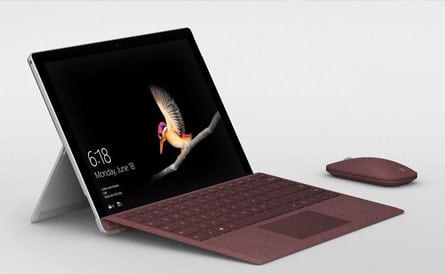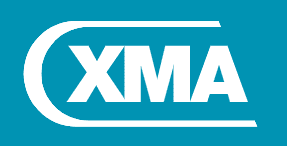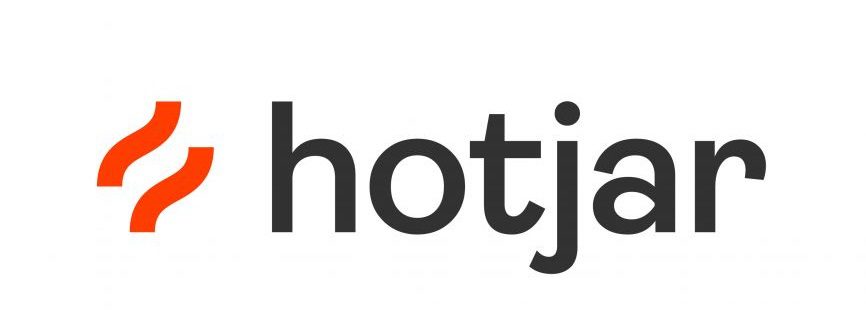XMA named CRN Public Sector VAR of the year
In the 25th year of the CRN Channel Awards, it is with immense pride that we officially announce XMA has been named Public Sector VAR of the Year for the 2nd year running.
Ian Cunningham, Director of Sales & Marketing at XMA, who accepted the awards with the rest of the XMA Board commented “‘The level of competition this year was extremely tough and we were up against a range of industry peers who we admire and respect and who we knew would be formidable opponents, so winning against them makes it even more special.
I am beyond delighted XMA have been named CRN’s Public Sector VAR of the Year, proving that all of the hard work and determination across our company this year from top to bottom has really made a difference and is now publicly recognised. The proposals to win these awards told the story of our people and the tremendous service they have provided our customers across the year, but also it is a story of transformation and change in our company. We are being rewarded for investing in our people, evolving our systems and processes, to ultimately give our customers best in class solutions, products and services at the right time, right price and with fantastic service and relationships driven by our staff.
I’d like to extend a huge thank you not just to our staff, but to all our customers, partners and associates without whom we could not have reached such a fantastic milestone. And the good news – we are by no means finished.
Success breeds growth and XMA are growing strongly for the future.”
One team, one dream
We are tremendously proud of our achievements over the past 12 months of which much is credit to our people who continue to go the extra mile. They are critical to our success and we recognised this through the introduction of a number of training and development programmes to help them reach their full potential.
Our investment in digitally transforming our business has enabled the development and implementation of new systems, helping streamline how we work and service our customers.
Working together with one common goal, we have achieved huge growth across our Corporate, Public Sector and Ecommerce business, achieving an extended route to market and an empowered workforce.
XMA would like to extend a huge congratulations to all the finalists and winners at this year’s CRN Channel Awards. We are proud to be part of such an exciting and innovative industry and look forward to continuing to exceed expectations by delivering the best IT solutions to our customers throughout 2019.
Doing a little extra with “Little Extras”
With the unveiling of the 2018 budget last week, it was announced that the government would be investing an additional £400m into schools across England and Wales.
This additional investment was described as giving schools the extra budget for “the odd little piece of kit that they need*” – more specifically, “whiteboards and a couple of computers*”. This will be a one off capital payment direct to schools, averaging £10k per primary and £50k per secondary school.
The government have experienced a huge backlash across the country, with Geoff Barton, general secretary of the Association of School and College Leaders, saying “It is a sign of the government’s priorities that it is spending more on fixing potholes than on fixing the school funding crisis.”**
We agree that it is a small investment, and it certainly isn’t enough to help schools stretch to all the necessities they need. However, with our help we can make that additional budget go a lot further than just “a few little extras”. Our experience in doing more with less has supported schools in meeting their goals despite restricted budgets. Innovative technology solutions needn’t cost the earth. They just require careful planning, consideration and future proofing.
We pride ourselves in taking a consultative approach, by taking the time to understand your environment, challenges you currently face, and what your objectives are as a school.
Our specialist Schools team are ready to help you do a little extra with your “little extras”. Get in touch with us today so we can help your budget stretch further.
If you would like a member of our Schools team to contact you to discuss doing a little extra with “Little Extras”, please complete the fields below:
*The Guardian, 2018
** Schools Week, 2018
Choosing the Right Technology: IT procurement Tips for SMEs
A well-considered investment in new technology is an investment in your business’ long-term future.
It’s an exciting time for any organisation. The right tech, whether hardware or software, can transform a firm’s growth potential, helping your business take the next step in its success story. However, it can also be a stressful time as smaller firms don’t necessarily have the kind of in-house IT procurement expertise needed to make important tech investment decisions with confidence.
With so many alternatives on offer, working out the best IT solution for your business isn’t always straightforward – and the implications of getting it wrong can be costly. Here are our thoughts on some of the steps that smart SMEs are taking in order to make sure their technology investment decisions have the desired impact
1. Start at the end
Just like any kind of capital expenditure, the intended benefits of the investment should be well understood before the procurement process starts. The primary reason that SMEs buy new technology is the need to improve performance or optimise a business process, so look at the processes in your business and ask, what should or could be done better, more quickly or more efficiently?
Often the best people to identify these pain points are your workforce. A staff survey can be an effective way to work out how much time is being spent on different activities, which can help to identify and prioritise inefficiencies.
Then you can ask yourself, could technology help to address this?
Are staff spending hours on end in team meetings, for example? Perhaps they need a more effective tool for collaborating, like an Instant Messaging system or a project management app?
Are they taking an age to locate customer files in filing cabinets? In that case, a scanning solution could make that process far more efficient and productive, freeing them up to make an impact elsewhere in the business. A business should only invest once it has clearly identified the processes it needs to change and how new technology can effect that change.
2. Consult and report
So, now you know what you want your new technology to be able to accomplish, it’s essential to consult all the staff who will ultimately be using it about the functions they need.
These are not vague ambitions, but clear objectives that tie in to the needs of the business.
You can also ask them about any other desirable features that would help them do their jobs better.
All these factors should also be ranked according to importance, as budget limitations may not allow you to tick every box, so prioritise the most critical.Some of the issues you will want to consider include usability, security, scalability, functionality, reliability, quality, the provision of support and compatibility with existing systems.
Once your analysis is complete, create a written report that lays out exactly what the investment is designed to achieve, that can be shared with, and signed off by everyone that will be affected. This document will prove invaluable when it comes to navigating through the huge variety of potential solutions that are available.
3. A systematic solution
The huge amount of technology aimed at SMEs can be seen as both a blessing and a curse.
On one hand, it makes it more likely that there is a product out there that precisely suits your circumstances, on the other, finding it could be a real challenge.
Now you have your comprehensive list of requirements, one option is to create a spreadsheet comparing them against a selection of potential solutions.
You can then start narrowing down the list by working out which option fulfils the most criteria to find the best solution.
Of course, cost will be a factor too, but look beyond the initial investment to consider the long-term value, such as the print cost per page provided by a new printer.
If this still seems a little overwhelming, then teaming up with a technology supplier could be the way forward.
4. A helping hand
Don’t think of us just as a supplier with a sharp salesman who’s trying to sell you the most expensive solution they can, regardless of its suitability.
We function more like a trusted procurement partner, who can support you through the decision-making process, installation and bedding in of any new technology.
We want to build a long-term relationship with your business, so it’s in our interest to ensure we provide the right long-term solution for you.
We work hard to understand what businesses need from their technology and develop integrated solutions that enable customers to achieve their goals. And work with you to understand the challenges you face, then introduce services and products that will help you to work smarter and stay ahead of your rivals.
5. Teething troubles and training
Most IT professionals will tell you that, however well planned an installation is, some degree of teething troubles are inevitable.
For small businesses, any period of downtime can have a huge impact, so ready access to technical support and training is essential, especially in the first few months.
Again, we can provide some added value by managing the installation process.
Training ensures that your staff are getting all they can out of a new technology, using it to its full potential and generating the maximum positive impact on productivity, as well as delivering a better Return On Investment (ROI). We can offer training, so you have plenty of options to get the right solution for your business.
Learn how organisations from various sectors are deploying technology to their advantage by visiting our Success in Action page.
Top tech that we think will make this academic year epic!
The uniforms are ironed, the shoes are polished and parents are breathing a small sigh of relief – the summer holidays are over and it’s time to get back to business!
As the new academic year commences, it brings with it a fresh beginning, a blank canvas for new opportunities and endless possibilities. It’s an exciting time as students embark on the next chapter in their educational journey.
But it’s an exciting time for us too! There’s nothing more rewarding than seeing our young learners achieve their dreams, especially now that so much more is possible through the innovative application of IT.
Technology has opened up a whole new world for learning. Students have flexibility over what mediums they can learn with, they have immediate access to information and are no longer restricted to the classroom.
Exciting new technologies are emerging, breaking down the boundaries of traditional learning and enriching the educational experience. With so many new innovations designed to make learning more fun, we have narrowed down the selection to a few of our favourites…
3D Print
Building the vision into a tangible outcome
Print no longer means “Print”! Sitting perfectly within STEAM curricula, 3D print provides a truly creative and immersive learning environment. By producing tangible results, students are instantly engaged, developing a real motivation to learn. This hands-on-learning approach brings complex concepts to life and 3D print helps bridge the gap between traditional classroom concepts and reality.

Virtual Reality
Immerse learners in a simulated learning environment
Virtual Reality (VR) was a thing of the future but now it’s here and making waves through the education sector by changing the way educational content is delivered, allowing users to interact with it within a virtual world.
Students can explore a subject in detail, without having to read up about it. They can develop an understanding of how things work in a more practical environment. And they can scale learning experiences, making them more engaging and dynamic.

Microsoft Surface Go
Effortless 2:1 computing
The latest addition to the Surface family! The device is a 10-inch screen and 3:2 display with Microsoft claiming it is the ‘smallest, lightest and most affordable Surface yet’. It’s revolutionary 2:1 model enables the mobility of a tablet with the performance of a laptop and includes enhanced lesson customisation with Office 365 and seamless tools like Microsoft Teams enable assignment creation, progress tracker.

Sphero
Teaching students to code
We love this little guy! Sphero is an app-enabled robot which uses basic code to programme its actions – whether that be jumping, moving in a particular direction, dancing or changing colour. With its own Edu App providing heaps of collaborative STEAM activities such as Draw & Drive to learn real JavaScript, Sphero captures and nurture imaginations instantly.

Spongy Elephant
Award winning bite-sized training for schools and trusts
Ok, so it’s not exactly tech but we still see Spongy Elephant having a huge presence in ed this term! Put simply, Spongy Elephant provides your staff with bite-size learning bursts that are easy-to-access, easy-to-consume and easy-to-implement when they need them, rather than have them scheduled for school INSET sessions and offsite formal training.

We are helping schools similar to yours, to introduce the latest and greatest tech to their classrooms, giving them the confidence and reassurance that they are providing their students with the best learning experience possible.
If you would like to learn more about any of the technologies mentioned or discuss other ideas for revolutionising your classroom, our Education team are on hand to help.
Success for XMA as the 2018 CRN Channel awards shortlist is announced
In its 25th year, many will have been anxiously awaiting this years’ shortlist for the CRN Channel Awards 2018. The awards are the perfect opportunity to share acheivements and recognise those who have made outstanding contributions to the channel. XMA are proud to announce our shortlisting at this years awards.
As the current reigning winners of the CRN Public Sector VAR award in 2017, we have continued to deliver value to our public sector customers. As a result, XMA have been named one of the finalists in the running to be named this years winners. Further to this, XMA have also been shortlisted under the ‘Reseller of the Year (£51m+)’ category, a prestigious title for any reseller in the channel.
Ian Cunningham, Director of Sales & Marketing at XMA had this to say on the news of our shortlistings:
“As competition for the CRN Reseller of the Year and Public Sector VAR of the Year awards is so incredibly high, I am delighted XMA have been shortlisted for both awards for the second year in a row. Last year I was incredibly proud to accept the CRN Award for Public Sector VAR of the year on behalf of XMA, particularly in front of an audience of industry peers.”
“XMA is powered by our people and it is them who make these awards possible through their hard work and focus on our customers. They live our values and make a difference.”
The awards ceremony will take place on the 15th November, where we look forward to celebrating success with other industry peers from across the channel.
2 rules of thumb as you modernise your Data Centre
There are two rules when it comes to modernising your datacentre but what it boils down to is focusing on a good outcome.
Rule #1: Keep it simple
When technology needs an update, some organisations choose to modernise over time, following the same problem-by-problem approach they used to build the original data centre. This piecemeal approach is complex and can be agonisingly slow. What’s worse, all that time and effort won’t necessarily lead to a better end product or even lower costs.
Instead of focusing on daily problems that arise, hyperconverged infrastructure (HCI) lets you focus on the outcome: a simpler data centre that’s cost-effective and easy to manage. HCI takes a building block approach to architecture, consolidating compute, storage, network switching, replication, and backup in a single integrated system. The consolidation of these IT functions onto virtualized hardware can greatly simplify environments that have been divided by siloed point solutions.
VM-centric HCI systems are also simple for IT administrators to manage, and require much less data centre space than traditional IT devices.
Rule #2: Don’t overspend
Hyperconvergence requires some upfront investment, but it can deliver a huge return on that investment. In this study based on research with real world customers, Forrester Consulting found that HCI reduces TCO by 69% on average compared to traditional IT. Converging the entire IT stack – firmware, hypervisor, and data virtualisation software – has additional advantages, according to that same study. Data centre footprint can be reduced 10:1, backups and disaster recovery become simple and straightforward, and upgrades are managed for the whole stack. The most efficient solutions also free up significant staff time, boosting the economic benefits even further. IDC reports an 81% increase in time available to focus on new projects as a direct result of hyperconverged deployment.
Our data centre solutions guarantee high availability, reliability and security for your infrastructure
Read More
Does your technology make the grade? 4 reasons why technology is critical to learning
With GCSE results out today and expected to have been the toughest yet with the new grading system, it got us thinking. How essential is technology to the way our students learn?
When I think back to my school days, which actually weren’t too long ago (no, really!), the overhead projector was the latest mod-con to hit the assembly hall and the chalkboard was still the smartest way to share real-time lesson content.
Well, technology has come a long way since those days, yet we still managed back then. Students were still learning, achieving and prospering from their education. So if we were able to nurture success before the technology boom, why is it so important in today’s classroom?
Here are 4 reasons why we believe technology now plays a critical role in learning:
1. Students demand it
Teens spend nearly 9 hours every day consuming media and have grown up immersed in technology, so keeping up with this demand is essential. The innovative adoption of technology can also play a key role in the recruitment of the next student body but IT departments should ensure that core infrastructures and applications have the flexibility to support these changes.
2. Learn at their own pace
Traditional learning could often be fast paced, risking a drop off of concentration and understanding. With the integration of technology in the classroom and learning concepts such as flipped learning, students can learn at their own speed, pause, and recap whenever they need, meaning that the more advanced student can go ahead, freeing up the teacher to provide support 1:1 to those who need it.
3. Enhance Engagement
Feedback from our customers over the years suggests that students learn best being more interactive. This is particularly apparent in STEAM subjects where content is often more complex. Technologies such as 3D print and robotics are leading the way in STEAM by breaking down the learning barriers and offering more practical methods of learning, whilst future-proofing students as they enter the workplace.
4. Enable Collaboration
Technology permits a connected world and in this case, a connected learning environment. With intelligent applications such as Office 365 and G Suite, students and teachers can communicate, collaborate, chat and use the familiar productivity applications in a secure environment.
As experts in education technology, we are close to the market and its trends. Here are a few technologies that are already making a real impact in the classroom:
Chromebooks
Chromebooks are taking over the classroom and the reasons are simple. They are cost effective and affordable, feature an all-day battery life and instant on functionality; and with Chromecast, students and teachers can instantly share their screen.
If you are interested in Chromebook, you should check out our latest offer! You can get a HP Chromebook for as little as £65.00!
3D print
For reasons we’ve previously discussed, 3D printing can play a valuable part in STEAM subjects, transforming the classroom into an interactive learning environment.
iPad
iPad is the ideal computing companion both inside and outside of the classroom. Its portable format, instant load up time and touch screen makes life easy for teachers and students alike. Perfect for internet research, making videos and music, taking lesson notes and sharing and managing content. What’s more, iPad is now much more cost effective and has full integration with cloud platforms such as Google and Microsoft.
So it’s clear, we have come a long way since school days were guided by a text book and piece of chalk. The dawn of the internet revolutionised the way we gained information and technology evolved around us – so much so, that teens today are technology native and would probably rather swap their right kidney than sacrifice their mobile phone.
That said, technology has enabled personalised, engaging and even mobile learning. Its enhanced collaboration and takes traditional subjects such as science, engineering and technology to the next level. Without it, the classroom struggles to thrive which is why building a technology environment that supports these trends is essential.
Is your tech up to the task?
Not sure how to enable cloud managed mobility, whether your network can support the load or how flipped learning can really make a difference? Our specialists have the answers and can help determine whether your existing IT is up to the job.
Ben Brown
Head of Schools
It Isn’t Easy Being Green – But Hyperconvergence Can Help
Everyone seems to be looking for ways to be more “green” these days – hybrid cars, reusable grocery bags, etc. And those in IT are no exception. Traditional IT environments consume an incredible amount of energy resources, such as power and cooling. The key for organisations focused on moving towards a greener data centre is to emphasise efficiency in energy consumption and efficiency in IT processes and systems. In other words, green IT needs to align to efficient IT.
The road to a greener data centre is paved both by small, incremental changes as well as monumental technology shifts. Advancements in software often naturally lead to more energy efficient data centres. For example, hard drives are now built to consume less power than in the past, new server features help reduce superfluous cooling costs, and data optimization techniques, such as inline and at inception deduplication and compression, lead to efficiencies in processing, storage, and backup.
Hyperconvergence represents a major technology development capable of transforming the data centre into a lean, green, efficiency machine. By converging all IT below the hypervisor, hyperconverged infrastructure immediately makes the data centre more efficient and environmentally sound. The data centre goes from as many as 12 disparate IT components to a single solution, so there is no longer a need to utilise storage space, power resources, or cooling functions on these IT components.
In fact, an IDC whitepaper found 75% of respondents realised an average of a 65% improvement in utilisation of storage resources as a result of hyperconverged infrastructure. In addition, nearly half of surveyed customers realised a 47% reduction in cost of data centre power and cooling expenses.
Though revolutionary, hyperconverged infrastructure is not a rip-and-replace technology as it can be introduced into existing environments as part of normal refresh cycles. For example, a hyperconverged solution can first be deployed in place of traditional data storage as a first step to modernising a data centre, and can later replace additional IT components over time as needs arise. This approach offers an opportunity to simplify the existing infrastructure and the complicated process of updating that infrastructure. Once standardised on a hyperconverged solution like HPE SimpliVity powered by Intel®, IT teams would only have a single product to refresh instead of a variety of separate IT components – which helps explain why 26% of customers in that same IDC study cited the need for fewer tech refresh cycles.
Hyperconvergence has always been focused on simplifying and consolidating the data centre. It’s no surprise that organisations looking to reduce their environmental footprint have discovered significant “green” opportunity in hyperconvergence. The benefits in space utilisation and operational efficiency make it more than worthwhile to implement a hyperconverged solution and transform your data centre into a lean, green efficiency machine.
Don’t let your printer fall victim to hackers!
Printers that reside on your network could be hacked
Security breaches are becoming increasingly sophisticated and dangerous in the way hackers can now access confidential data… Did you know your printer could be an entry point to your whole network?
Multifunction Printers (MFPs) have evolved to become integral to the network, with many other functions than just printing, including copy, scan to network destinations and send email attachments, these devices come equipped with hard disk drives and often run internal web servers.
Whilst MFPs and printers have improved business productivity and many business rely on them, they pose the same security risk as any networked device if left unprotected. With data breaches rising and increasing industry and regulatory requirements around information security, businesses may suffer financial and reputational damage if they ignore the risks of unsecured printing.
Device
Printing and imaging devices store user credentials and other sensitive data such as stored print jobs that can be accessed if it’s not encrypted or regularly erased.
Network data
Multi-function printers reside on your company network. They can also be hacked like a computer and be an entry point for malware and viruses
Access control & authentication
In the absence of a pull printing requirement, sensitive documents may be retrieved by any user. Anyone who has access to printer settings can exploit permissions if the settings aren’t restricted to admin only access.
Monitoring & management
Lack of centralised printer control can lead to inefficient, incomplete, and time-intensive efforts by IT to establish and maintain printer security settings.
Document
Output trays are an easy way for sensitive data to fall into the wrong hands. Unprotected input trays could lead to the theft of special paper–such as check stock.
Safeguarding
Many organisations still have work to do in safeguarding their print infrastructure, however by introducing secure printing controls reduces risk and can help reduce costs through user authentication, which can minimise wasteful printing and provides a method to audit user activity, this enables organisations with better control and responsibility.
Another measure to introduce increased security could to develop a print security strategy and ensure all employees are appropriately briefed and know how to use features such as PIN enabled printing so that features are used well and do not disrupt your organisation.
Are your devices fully secure?
Do you fully understand the complexity of your print environment, the volumes you are printing, or how much it is costing you? Our team of print professionals are on hand to discuss your exact needs and will work with you to ensure a solution is implemented which maximises productivity, whilst driving down unnecessary expenditure. Contact us now:
Call 01422 444 666
Email halifax@xma.co.uk
4 ways universities can reduce spending
Reflect and review year-on-year
Universities are under increasing pressures year-on-year to reduce their expenditure. With cuts to government funding and university applications decreasing by 6%, its’s now more important than ever that Universities reflect on their spending habits, and review areas in which costs can be saved.
However, how do Higher Education establishments ensure that cutting costs doesn’t result in lower quality education? How can Universities leverage technology in a way that bring long-term benefits?
1. Online Education and Hybrid Learning
There are multiple costs involved with hosting lectures. A single 1 hour lecture incurs costs such as electrical and heating costs, powering student laptops through the network, and costs to the lecturer. Each student will attend an average of 14 hours of lectures per week – equating to 56 hours per month. By reducing this down to 12 hours per work, Universities can save the costs of powering 96 hours’ worth of lectures per year.
Through various apps such as Teachable, Skillshare and Learnworlds, students can virtually attend their lectures online, and access the teaching material as and whenever they need.
2. Streamline your business processes
Administration is one of the highest costs to any organisation, yet one with an effective alternative. If people are used to process forms and information repetitively, consider doing this electronically where it requires little to no human intervention.
3. Leverage technology
We are living through an ongoing digital revolution. Students expect their education to deliver a digital experience in line with the one they have in their leisure. It is important to ensure that Universities explore all options for the best possible deal on technical solutions. Read thoroughly through each bid Universities receive in response to their tender.
Additionally, seeking out the best warranty and service deals will save any University money should devices or a network go wrong.
4. Go paperless!
Going paperless doesn’t just save costs, it helps to save and neuter the environment. Universities are being encouraged to “embrace the digital reality which we ourselves are responsible for leading at the University.”
University students may pay for their printing, but consider all of the other associated costs: services, delivery, and mailing, storage, processing, disposing, and recycling. Copier and printer supplies alone amount to a huge expenditure.
By going paperless, and avoiding printing where possible, your University could save up to £25,000 per annum. Digital communications, such as emails and online portals, will reduce overall costs of printed communications and help to save the environment.










 Monitoring by Hotjar
Monitoring by Hotjar